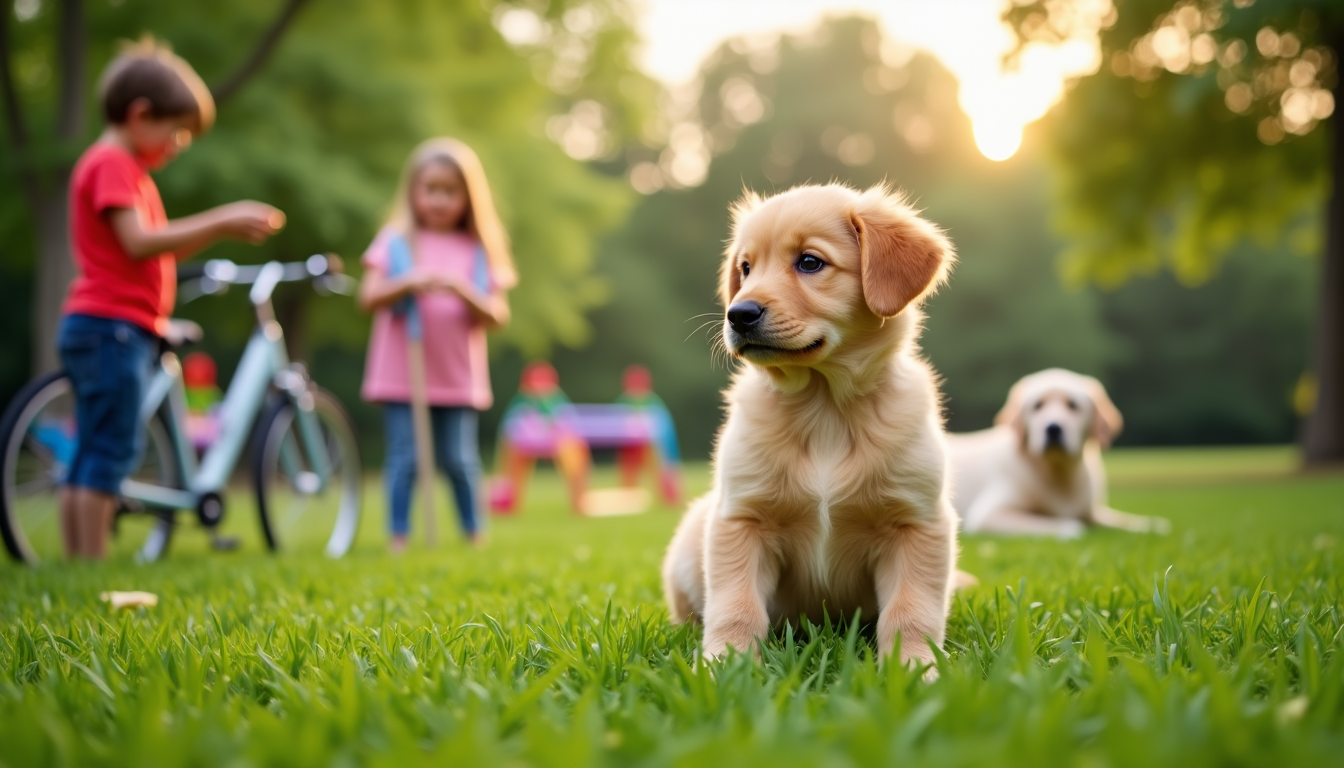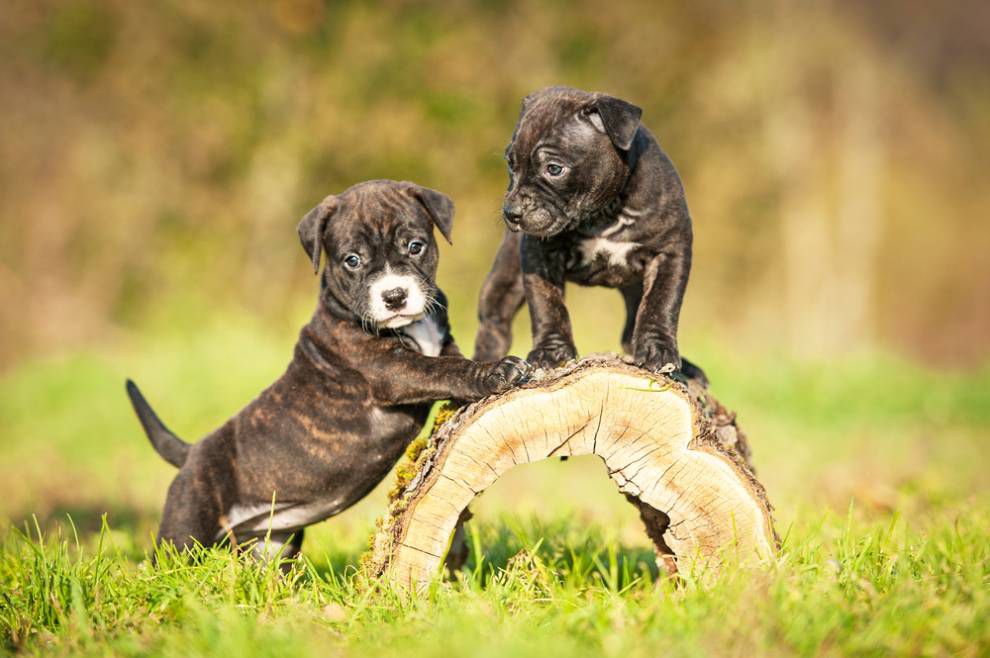Your puppy’s future personality takes shape during a short window between 3 and 14 weeks of age. This fact surprises many pet owners. Understanding the puppy socialization window is crucial for raising a well-adjusted dog.
The puppy’s brain becomes uniquely ready to process new experiences during this vital puppy socialization window. The American Veterinary Society of Animal Behavior stresses that proper socialization should take priority even before finishing vaccinations.
The impact runs deep. Puppies with good socialization grow into confident, adaptable adults. They handle vet visits easily and show less anxiety or aggression. Puppies that miss this puppy socialization window often develop behavioral problems that don’t resolve well later.
Making the best of these few precious weeks can feel daunting. We’ve created this complete guide to direct your puppy socialization window experience. Our guide combines veterinary expertise with proven strategies to help your puppy become a happy, well-adjusted adult dog.
Understanding the Puppy Socialization Window
The puppy socialization window marks an amazing time when a puppy’s brain grows at lightning speed. Their brain builds neural pathways that shape how they’ll see the world for the rest of their life – something that never happens again.
What happens in your puppy's brain during socialization
Puppies come into this world without any fear. Their eyes and ears start working fully around three weeks old, and they begin to move around. Their brain sees everything they meet as normal and safe. This natural fearlessness lets puppies learn about new things without holding back.
Their brains show amazing neuroplasticity during this time. Neural connections form based on everything they experience. The things they see and do become hardwired as “normal” in their growing brain.
Why the 3-14 week period is critical for development
Nature sets a strict timeline for this growth. Puppies start learning about their world with almost no fear between weeks 3-5. Their fear responses kick in around 5-8 weeks, and by 7-8 weeks, they start showing their first signs of caution toward new things.
This window becomes impossible to recreate once it closes at 14 weeks. Your puppy’s brain never accepts new experiences this easily again. Science backs this up – puppies who find homes before 12 weeks are 35% less likely to develop fear or anxiety and show half as many destructive behaviors compared to later adoptions.
How early experiences shape lifelong behavior
Your puppy’s adult personality stems directly from their socialization experiences. Research shows that puppies with good early experiences bounce back better, even when they face tough situations later in life.
Dogs who miss out on socialization during this key time face much higher risks of behavior problems. These problems can break the bond between dogs and their owners and top the list of reasons why dogs end up in shelters. The harsh reality is that behavioral issues—not disease—are the leading cause of death for dogs under three years.
Week-by-Week Socialization Timeline
Your puppy’s week-by-week development offers perfect timing to boost their socialization. You can provide the best experiences when you know what happens at each stage.
Weeks 3-7: Early development with mother and littermates
Puppies develop significant social skills through their mother’s and littermates’ interactions. They start to learn about their environment around 3 weeks. They try solid food and pick up simple canine communication skills. Playtime helps puppies practice vital behaviors like bite inhibition. Their siblings yelp when a puppy bites too hard, which teaches them to control their bite strength.
Puppies watch and copy their mother’s reactions to new people and situations. A relaxed and friendly mom usually means puppies will feel comfortable around strangers.
Weeks 8-10: First experiences in your home
At 8 weeks, puppies move to their new homes – right as a fear period begins. This timing might seem odd, yet they stay highly impressionable. Positive experiences become especially valuable during this time.
Puppies should learn their names and start simple commands like “sit” during this phase. They build crate confidence and learn to be alone briefly. Puppies need to stay with their litters until 8 weeks. Those separated earlier often show fear, aggression, anxiety, resource guarding, and play biting issues later.
Weeks 11-14: Expanding their world safely
The period between weeks 11-14 is perfect to introduce your puppy to more complex environments. Keep all associations positive. Start leash training outdoors and practice recall games. Try to expose your puppy to 90 different situations with enjoyable experiences by 14 weeks.
Weeks 15-16: When the socialization window begins to close
The socialization window starts to narrow as your puppy reaches 16 weeks. They become more cautious around new things naturally. Build upon familiar experiences instead of introducing new ones. Take walks in busier areas and practice exercises in different places.
Note that after 16 weeks, it becomes substantially harder—sometimes impossible—to teach a dog to accept new things or overcome fears.
Essential Experiences During the Critical Socialization Period
Your puppy’s socialization window offers a perfect chance to build their confidence through planned experiences. A well-planned introduction to these basic encounters helps create a balanced adult dog.
Meeting different types of people
Meeting people of all kinds stands as the most important part of puppy socialization. Your puppy should meet and have good experiences with:
- Men with beards and deep voices
- People wearing hats, sunglasses, and backpacks
- People of different ethnicities and ages (including elderly individuals)
- Children playing and running
- People using wheelchairs, canes, or walkers
- Toddlers walking and squealing
Let your puppy set the pace at the time of meeting new people. Tell visitors to wait for your puppy to approach them before petting. They should avoid standing over or reaching above the puppy’s head. Suggest they pet under the chin or chest where the puppy can see their hand.
Encountering various animals and environments
Your puppy needs good experiences with more than just people:
Animals: Other puppies, adult dogs (both male and female), cats, and if possible, farm animals.
Environments: Busy streets, parks, pet-friendly stores, and different walking surfaces. Car rides while carrying your puppy let them see multiple places at once without risk of disease before full vaccination.
Exposure to everyday sounds and situations
Sounds shape your dog’s confidence. Early exposure to sounds helps prevent common fears like thunder or fireworks anxiety. Start with soft volumes and increase them as your puppy stays relaxed.
Match sound exposures with fun activities—treats, toys, or playtime create good memories. Key sounds to include:
Traffic noise, vacuum cleaners, appliances, doorbells, sirens, thunderstorms, and children playing.
Whatever your puppy’s reaction, stay calm if they get startled. Say “It’s okay!” in a cheerful voice without babying them. If scary sounds continue, move away and remember which sounds need more practice later.
Navigating Fear Periods While Socializing
Your puppy goes through critical socialization periods that include fear stages—these are normal developmental phases where puppies become more careful around new experiences. These phases usually happen around 8-11 weeks and again between 6-14 months of age. You might notice that even your confident puppy starts showing caution toward familiar things or situations.
Recognizing signs of fear vs. normal caution
As puppies grow, they become more aware of their surroundings. Watch for these subtle signs of fear (the “whispers”) that often come before more obvious ones:
- Looking away or avoiding eye contact
- Tail tucking or lowering
- Raised hackles or stiffening posture
- Lip licking, yawning, or panting
- Backing away or trying to hide
A bit of caution is normal—your puppy might pause briefly before checking out something new. This becomes a concern only when your puppy completely freezes, trembles, or tries to escape.
How to respond when your puppy shows fear
Never force interactions when your puppy seems scared. This usually backfires and creates deeper, lasting fears. Here’s what you should do:
Let your puppy move away from whatever scares them. You might want to show them “there’s nothing to fear,” but this can make their fear worse.
Move away from what triggers their fear. Once they feel comfortable with the distance, reward any positive curiosity or interaction with treats.
Give praise and treats when your puppy looks at the scary object on their own. Reward them also when they look to you for direction.
Building confidence through positive experiences
Bring back feared items slowly, at a distance your puppy can handle. Keep training sessions short and positive rather than long and intense.
Simple obstacle courses and trick training help build overall confidence. Nose work activities tap into your puppy’s natural abilities and boost their self-assurance.
Note that there are no quick fixes for fear periods. Puppies that face stress or trauma during this crucial time might develop behavior problems later. Your patience and positive guidance will help your puppy get through these growth stages, creating a more confident adult dog.
Socialization After the Window Closes
Your puppy’s social development doesn’t stop at 16 weeks, even though the critical socialization window closes then. Research shows dogs need consistent, patient, and loving attention for social development throughout their lives.
Continuing socialization beyond 16 weeks
Your puppy’s brain and body keep developing after the main socialization window ends. Dogs typically reach social maturity between 1-2 years of age. Puppies might become fearful of new experiences as adults or even backslide without regular exposure to different situations.
Dogs go through many physical, physiological, hormonal, and mental changes during development. Regular socialization builds and preserves their confidence. You should treat confidence like any other skill that needs constant practice rather than a one-time achievement.
Addressing missed opportunities during the critical period
Dogs can still learn social skills as adults if they missed early socialization. They just need extra time and patience. Dogs that missed proper socialization often display:
- Fearfulness or anxiety
- Excitability
- Aggressive behaviors
- Reactivity around unfamiliar dogs or people
Here’s how to help an under-socialized dog:
- Let them set the pace—avoid pushing them into stressful situations
- Use desensitization techniques—expose them to triggers gradually from safe distances
- Apply positive reinforcement—reward calm, confident behaviors consistently
- Get professional help—certified behaviorists can direct you through this process
Maintaining social skills throughout your dog's life
Good socialization doesn’t mean forcing interactions with strangers or new dogs. Your focus should be on comfortable exposure to different environments. Your dog needs regular chances to practice being confident in various settings. Group walks, controlled playdates, and training classes help with ongoing socialization.
Positive experiences matter more than just exposure when it comes to social outings. Set realistic goals—not every dog becomes a “social butterfly.” Most dogs can learn to direct themselves comfortably through the world with consistent work.
Dogs need adequate rest between socialization sessions. Give them time to process their experiences and decompress mentally.
Conclusion
Your dog’s future depends on proper socialization during the critical 3-14 week window. This period is a chance for your puppy’s brain to accept new experiences as normal and safe.
A week-by-week timeline helps you expose your puppy to appropriate experiences at each developmental stage. Fear periods might seem daunting, but your patient guidance through these phases builds lasting confidence.
The primary socialization window closes around 16 weeks, yet your dog’s social development continues throughout life. Your puppy needs regular positive experiences with different people, environments, and situations to maintain the foundation built during early socialization.
Your puppy deserves immediate attention if they’re within this critical window. Each positive experience creates neural pathways that benefit your puppy into adulthood. A well-socialized puppy becomes a confident, adaptable adult dog and brings joy to your family for years.

